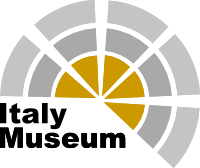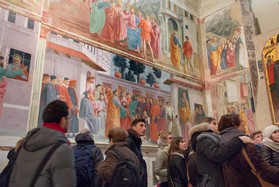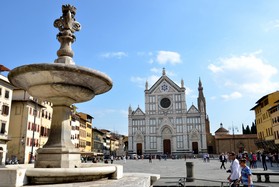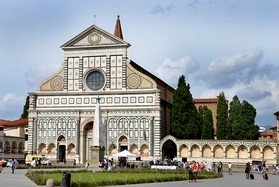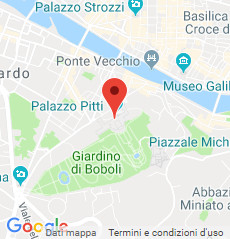Pitti Palace
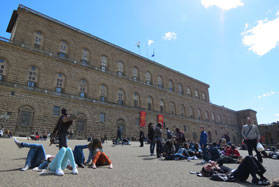

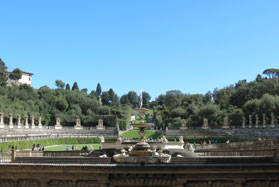

A little history of the Pitti Palace
According to Vasari, Palazzo Pitti (Pitti Palace) was designed by Brunelleschi even though it has not been proven. The construction of this imposing building was done during the second half of the 15th century. This work commissioned by the Florentine merchant Luca Pitti, friend and ally of Cosimo de Medici, was made by Brunelleschi's apprentice, Luca Fancelli. Luca Pitti wanted his residence to be the most imposing in the city. Pitti bought all the houses between his new palace and the footpath of the hill to construct the Boboli Gardens or in Italian Giardino di Boboli.
A century later, Eleonora de Toledo, wife of Cosimo I de Medici bought the palace and from that moment and for the next 2 centuries, the palace was remodeled and expanded practically as we know it today. With the extinction of the Medici, the duchy and the palace passed to the hands of the Lorraine house and during the 19th century Napoleon used it as a residence during his rule in Italy.
The palace became property of the House of Savoy in 1860 when Tuscany became one of the provinces of the Kingdom of Italy. King Vittorio Emanuele II used the Pitti Palace as a residence while Florence was the capital of Italy. Later in 1919, his grandson, Vittorio Emanuele III donated the Pitti Palace to the Italian state, becoming the headquarters of important museums in the city.
What is the Pitti Palace nowadays?
The Pitti Palace or Italian Palazzo Pitti today houses important collections of sculptures, paintings, art objects, costumes and porcelain, in a monumental complex that includes several museums:
Palatine Gallery: is a spectacular gallery that originally was the Medici gallery, this gallery exhibits works by Raphael, Tiziano, Rubens, Correggio and other European artists from the Renaissance and the Baroque.
Modern Art Gallery: a magnificent collection of paintings and sculptures, mainly of Italian artists that goes from the 18th century until the World War I. In its interior also some works of Italian artists of the 19th and beginning of the 20th century are exposed.
Costume Gallery (Galleria del Costume): this incredible collection of 6000 items includes costumes from the 18th and 20th centuries, costumes and accessories used in the theater. This is the only museum in the history of fashion in Italy, and in turn is one of the most important in the world.
Silver Museum (Museo degli Argenti): also known as "Treasure of the Medici". Here are exhibited objects from Chinese and Japanese porcelain, ivory vases, precious stones, mosaics, crystals and especially jewels from the Medici as well as from the 17th to the 20th centuries.
Porcelain Museum: this collection is the most beautiful in Europe in terms of porcelain objects. To the original collection were added pieces belonging to the Savoy and that were brought from palaces of different points of Italy.
Curiosities of the Pitti Palace
Did you know that the enormous size of the windows of the Pitti Palace was due to the Pitti's desire that to make them larger than the door of the Medici-Riccardi palace?
Did you know that in the amphitheater that is in the Boboli Gardens the first operas of the history were celebrated? This amphitheater was built using the hollow that was formed with the extraction of the stone used to raise the palace.
Why visit the Pitti Palace?
Pitti Palace (Palazzo Pitti) is a large complex of impressive galleries and museums that house important collections of paintings, sculpture and pieces of art. In addition, here are the Boboli Gardens with its wonderful Italian style. The Pitti Palace is located in the district of Oltrarno, which means across the Arno, crossing the Ponte Vecchio.
How to visit the Pitti Palace?
The Pitti Palace houses many museums and galleries: the Palatine Gallery and the Royal Apartments, the Modern Art Gallery, the Costumes Gallery, the Silver Museum, the Porcelain Museum and the Boboli Gardens (a true Outdoor museum). When buying the entrance ticket to the Palatine Gallery, it is also possible to visit the Modern Art Gallery, the Costumes Gallery and the Silver Museum. When you buy the entrance ticket to the Boboli Gardens, you can also visit the Porcelain Museum.
Other attractions in the area
Behind the Pitti Palace are the Boboli Gardens, an area of 45,000 square meters that become the largest green area of Florence with grottos, fountains, pergolas, a small lake and hundreds of marble statues. From Palazzo Pitti it is possible to reach the Palazzo Vecchio through the Vasari Corridor, one of the works that few know but that everyone can see. The Vasari Corridor or Corridor of Vasari is a passage that extends over the streets in the heart of the city.
The Vasari Corridor passes over the Ponte Vecchio, built during a crossroads of Roman times, the Ponte Vecchio was until 1218 the only bridge across the Arno River in Florence. The bridge, as we know it today, was built in 1345 after a violent flood that had destroyed the previous one.
The Palazzo Vecchio (Old Palace) is a monument of great artistic and historical importance in Florence. Over the centuries it has been the political center and symbol of the city. The facade of the Palazzo Vecchio (originally called Palazzo della Signoria) is covered with the rustic bricks from the quarries of Boboli.
You may be interested in:
St. Peter's Basilica (Vatican, Rome), Venice Museum Pass or Milan Cathedral.
Customers who booked this museum also booked:
Useful Information
Opening hours:
from Tuesday to Sunday from 8:15 am to 6:50 pm
Last admission: 5:30 pm
Closing: on Monday, Jan 1st , May 1st , Dec. 25th
Boboli Garden, Porcelain MuseumOpening hours:
8:15 am – 4:30 pm in November, December, January, February
8:15 am – 5:30 pm in March and October (whit standard time)
8:15 am – 6:30 pm in April, May, September, October and March (whit daylight saving time)
8:15 am – 7:30 pm in June, July, August
The last entry is always one hour before closing.
Closing: first and last Monday of the month, Jan 1st , May 1st , Dec. 25th

+39 055713655
Reach the museums in total comfort with our transfer service!

TRANSFER SERVICE
Book Now
